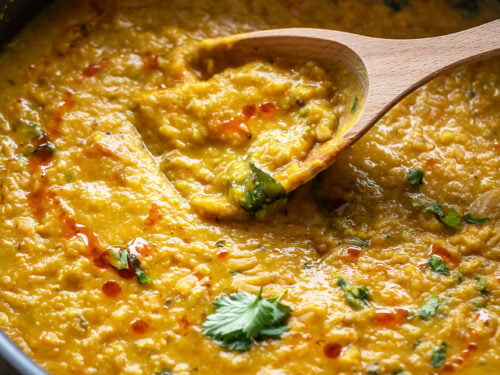Yin and Yang Food – How Does it Affect You?
Did you know that Yin and Yang, the principle at the heart of Chinese philosophy, applies to Chinese food and cooking as well? In Chinese medicine, all food can be divided into four Qis: Hot, warm, cool and cold; or yang, mild yang, mild yin and yin respectively.
In general, yang food improves blood circulation and warms us up, but too much yang food (or eaten during the wrong season e.g. summer) will induce constant thirst, hot flashes, night sweats and constipation. In contrast, yin food quenches thirst, cleanses our systems and cools us down, but if eaten inappropriately it will lower our metabolism and weaken our bodies. In particular, according to traditional Chinese, pregnant women are traditionally advised not to eat yin food (e.g. crab, watermelon) as it may increase the chance of miscarriage.
So what are some examples of yin and yang food?
Grains and Beans
- Mild Yang (warm food): glutinous rice, black rice, barley, sago, sorghum
- Mild Yin (cool food): wheat, barley, green beans, buckwheat, millet
- Right in the middle: Rice, corn (maize), sweet potato, sesame, soy beans, rice beans, oat, long beans, sweet peas, kidney beans, mung beans, lentil, broadbean
Meat and Dairy Product
- Mild Yang (warm):beef, lamb (mutton), chicken, shrimp, lobster, mussels, goat milk
- Mild Yin (cool): duck, abalone
- Yin: duck egg, crab, clam, octopus, squid, escargots, raw food
- Just Right: chicken egg and egg white, pork, scallop, fish, cow milk, yogurt
Fruits and Nuts
- Mild Yang (warm): peach, almond, dates, lychee, long yan, lemon, papaya, pine nut, walnut, chestnut, cherry, mango
- Mild Yin (cool):apple, pear, orange, strawberry, pipa
- Yin (cold): Persimmon, pomelo, banana, starfruit, kiwi, water melon, sweet melon
- Just Right: plum, pineapple, grapes, olive, sunflower seeds, pumpkin seeds, coconut milk, peanut, hazelnut
Vegetables
- Mild Yang (warm): spring onion, garlic, leeks, coriander / parsley, onion, pumpkin
- Yang (hot): pepper
- Mild Yin (cool): tomato, celery, egg plant, choy shum, spinach, asparagus, artichoke, cauliflower, tofu (including soy milk), gluten, lotus root, winter melon, cucumber, mushroom, needle mushroom
- Yin (cold): bok choy, arrowhead, water spinach, watercress, bamboo shoots, seaweed, straw mushroom, bitter melon, water chestnut
- Just Right: carrot, potato, taro, mushroom, turnip (very mild yin), black fungus (very mild yin)
Other Food and Ingredients
- Mild Yang (warm): spices such as young ginger, clove, dill, rosemary, sage, turmeric, thyme, horseradish, cayenne, nutmeg, wild pepper, cumin, star anise; stimulants such as alcohol, coffee, black tea and other caffeinated drinks; red sugar, ginseng
- Yang (hot): Cinnamon
- Mild Yin (cool): green tea, honey, beer, chrysanthemum tea, mint
- Yin (cold): Soy sauce, soy bean paste, salt
How Does This Apply To Us?
According to the Chinese, each of us are born yin, yang or somewhere in between. For example, if you always crave for spicy food you may have a “yin” body; and if you love watermelon anytime in the year you are likely a Yang.
Your health condition can also indicate the yin-yang balance of your body. Constant cold hands and feet? A Yin; Get soar throat easily and have a quick temper? A Yang. Seasonal and geographic variations will also affect our preference on yin and yang foods.
The Advice
- When cooking yin food (applies to most veggies), add yang ingredients such as garlic, spring onion, ginger and coriander.
- Eat seasonal food: let the nature guide us how to eat.
- Balanced diet: if we eat a wide variety of food, the yin and yang will balance out.






